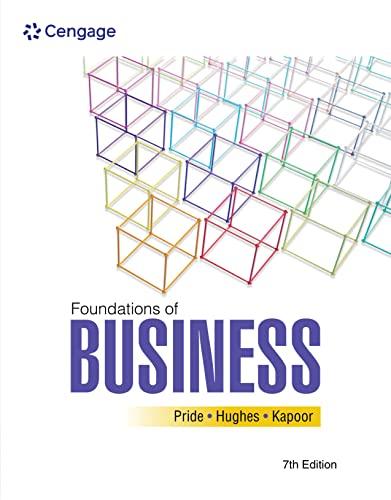Graeters still makes ice cream by hand, just like the founders did in 1870. But in every
Question:
Graeter’s still makes ice cream by hand, just like the founders did in 1870. But in every other respect, it’s a very different business from the mom-and-pop firm founded by the great-grandparents of Richard, Robert, and Chip Graeter. For example, Graeter’s now uses social media to stay in touch with customers and see what people say about its brand. Technology is also a factor in the new information systems Graeter’s recently installed to keep the business running smoothly as it pursues fast-paced growth and expansion in new markets and in national supermarket chains across the United States. Just as important, the company has arranged financing to support its longterm plans for national expansion.
Graeter’s Social Side
Even a small business can have a big presence in social media, including Facebook, Twitter, YouTube, and Pinterest.
With more than 210,000 “likes,” Graeter’s provides information about the company, reviews from customers, schedules for special events, information about where its four food trucks will be located on specific dates, and more on its Facebook page. It also posts a new message or photo every few days, and reveals the names of mystery flavors on Facebook in advance of other publicity. As a result, fans return to its Facebook page often. In addition, Graeter’s tweets frequently and periodically posts videos on its YouTube channel. There are even hundreds of photos of Graeter’s ice cream and bakery products posted on the Pinterest site. Graeter’s also monitors “mentions” of its brand on other social-media sites. As other people add their comments and click to “like,” the conversation continues and the word of mouth builds buzz for Graeter’s.
New Growth, New Systems
Paul Porcino, a consultant working with the Graeter family, observes that small, entrepreneurial firms often have only “a very small amount of information, and ... it hasn’t been pulled together in any meaningful way.” The first step was to define what Graeter’s executives needed to know to run the business. For example, they needed to be able to track unit sales online, in each store, and to each wholesale customer, and to measure both costs and profitability by product and distribution channel. Despite some technical challenges during implementation, Graeter’s has already experienced some of the benefits of collecting better information. When management noticed that overall bakery sales weren’t up to par, “we had to adjust,” comments Porcino. The remedy was surprising: “We actually reduced the number of products we were selling in the store. . . It wasn’t very clear exactly how much we were selling, but at least [we had] the good-enough gut sense in terms of the ones that were not selling, and we . . . adjusted the total inventory line.”
Counting on Accounting
Graeter’s controller, David Blink, is responsible for preparing “all financial statements, all reports, payroll, [and] any ad hoc reports that any of the managers would need. I handle a lot of the reporting for the retail side as well as the manufacturing side,” he says. With these reports in hand, the Graeter’s team can make informed decisions about how many seasonal employees to hire, which products to keep, how much to invest in new equipment, and other issues that arise day by day. Although an outside payroll company actually prints the employees’ checks, Blink’s department collects and analyzes payroll data as input for management decisions. In addition, an outside accounting firm prepares financial statements and additional reports based on information supplied by Blink.
Money Matters
A number of years ago, the Graeter’s team recognized they needed a new production facility. After examining what the business had done in the past and where it was going in the future, the three great-grandsons of Graeter’s founders constructed a plan to obtain the financing needed to purchase the land and build an additional plant. After scouting possible locations, Graeter’s signed a contract with Cincinnati, paying a token amount for land and borrowing $10 million from the city to pay for construction of a new 28,000-square-foot factory. The loan carried low interest rates and would be repaid over 20 years. In exchange, Graeter’s committed to “stay and grow” in Cincinnati for at least 20 years, creating dozens of new jobs when the production facility opened and additional jobs as Graeter’s growth continued. Now Graeter’s has the right combination of ingredients for expanding from coast to coast and beyond.
Questions
1. Suppose you were writing a social media plan for Graeter’s, with two objectives: to improve brand awareness in new markets and to build e-commerce sales.
a. What actions would be included in your plan?
b. What quantitative and qualitative measurements would you use to evaluate the results of your plan?
2. Graeter’s uses information to track cash, sales revenues, expenses, and inventory. How does this type of accounting and financial information facilitate effective decision making?
3. What kinds of questions do you think Cincinnati officials asked Graeter’s owners before agreeing to loan the company $10 million? Why would Graeter’s go with this financing arrangement rather than borrowing from a bank to pay for the new factory?
Step by Step Answer:

Foundations Of Business
ISBN: 9780357717943
7th Edition
Authors: William M. Pride, Robert J. Hughes, Jack R. Kapoor





